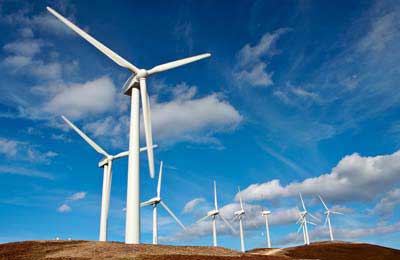
Base load power: the misconceptions
DUBAI, September 20, 2015
A proper explanation of base load and its role in sustaining economies is in order to understand how different sources of power contribute to meeting the world’s energy needs, said a top official.
The term that is being used more and more frequently by the media when discussing the energy needs – and misunderstood nearly as often – is base load, explained Knox Msebenzi, managing director of the Nuclear Industry Association of South Africa (Niasa).
Base load is the minimum amount of power needed to meet reasonable economic requirements.
Economies rely almost entirely on base load power to operate properly. Industries cannot operate effectively and grow without a stable source of power. Base load is required 24/7, 365 days a year, to run heavy industries such as smelters, mills, hospitals and refineries.
Blackouts in these heavy operations cause massive disruptions, damage equipment, put lives at extreme risk and ultimately cost the economy billions. According to Caroline Kende Robb, executive director of the Africa Progress Panel, power shortages diminish the region’s growth by 2-4 per cent a year, holding back efforts to create jobs and reduce poverty.
Base load needs to be constant, reliable, predictable and economical. It therefore generally requires the burning of fossil fuels, which have proven time and time again to be detrimental to the environment and the general population’s health.
There is also a misconception among the general public that renewables are able to supply base load power. The reason renewables cannot be considered base load is to do with the Net Capacity Factor (NCF) of the generating plant. The NCF of a power plant is the ratio of its actual output over the stated period of time, to its potential output.
According to the latest figures from the Electric Power Research Institute (EPRI), wind can only achieve a net capacity factor of roughly 25 per cent and photovoltaic solar is even less at only 20 per cent whereas newer generation nuclear power plants can now achieve a net capacity factor in excess of 92 per cent.
The output from renewable energy is linked directly with weather conditions, which makes the technology rather unpredictable and is referred to as intermittent power.
Another problem is the fact that storage of renewable energy is hugely expensive and unreliable, and is therefore not yet at a point where it is economically viable. In other words, renewable energy contributes to the grid when it is available, yet it cannot be stored economically and therefore cannot provide base load power.
Another important point to remember is the concept of the dispatchability of power. Dispatchable generation refers to sources of electricity that can be dispatched at the request of power grid operators to meet demand. Because wind and solar are dependent on the weather conditions, the power from these sources is not strictly dispatchable as it is available only when weather conditions are permitting and in the case of solar, only during the day.
As a result, any utility that has an abundance of such sources of energy would need to install standby capacity, in the form of dispatchable power such as gas or diesel generators. Therefore when considering the costs of renewable energy sources, these back-up generators need to be factored into the price.
In countries where the options for base load power are severely limited, nuclear energy can be a viable and efficient solution, Msebenzi points out. For instance, Koeberg Nuclear Power Station in South Africa is a base load power station with two 900MW units and a total capacity of 1800MW, with a net capacity factor in excess of 83 per cent over the past three years.
A wind farm of the same capacity would require 900 2MW units, with a surface area of approximately 112 sq km, whereas the surface area for Koeberg is 30 sq km (this includes a 3000 hectare natural reserve that surrounds the reactor) and the capacity factor of the wind farm being merely 25 per cent.
The other option, fossil fuels, is far more detrimental to the environment and to human health. Recent studies have shown that up to 600,000 people lose their lives per year through carbon pollution and related accidents in Africa alone. Coal power plants are also typically situated near coal mines and require an immense amount of cooling water to operate, which is a scarce resource and poses another significant challenge for water-stressed nations.
It is now clear to see that nuclear energy in no way competes with renewable energy sources but rather compliments them. If nuclear is to be compared to anything, it should be compared with other sources of base load power, such as coal and gas and not renewable energy. – TradeArabia News Service







